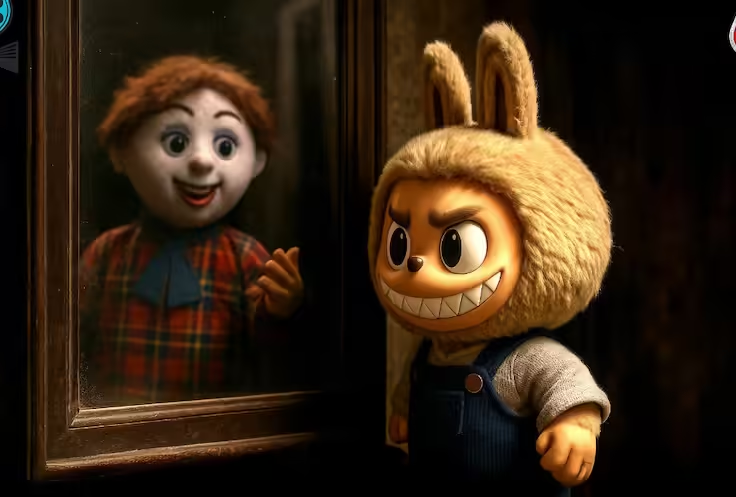Long before social media crowned Labubu the latest internet obsession, India had already met its nightmare-inducing doll. His name was Tatya Vinchu—a grinning, malevolent puppet possessed by the spirit of a gangster. First appearing in the 1993 Marathi film Zapatlela, the character terrified and captivated an entire generation, becoming what many now consider India’s original horror doll.
Tatya Vinchu wasn’t just a gimmick or a prop. He was a fully fleshed-out villain—menacing, memorable, and for many 90s children, unforgettable. His menacing eyes, shrill laugh, and iconic line—“Om Bhat Swaha!”—etched him into the subconscious of Indian audiences, long before memes or YouTube could amplify his legend.
A Cultural Phenomenon Born from Local Cinema
Directed by Mahesh Kothare, Zapatlela combined horror and humor in a format rarely seen in Indian cinema at the time. The film followed a police inspector who discovers that a criminal’s soul has taken refuge in a doll. While the premise drew inspiration from Western horror, Tatya Vinchu was unmistakably Indian in spirit and execution.
The doll was operated by renowned ventriloquist Ramdas Padhye and voiced by veteran actor Dilip Prabhavalkar, both of whom lent an eerie realism to the character. With practical effects and a tight narrative, Zapatlela became a cult classic—and Tatya Vinchu, a fixture in the collective memory of Marathi-speaking households.
Labubu and the Ghost of Dolls Past
In recent months, Labubu—an eerie, bug-eyed collectible figure—has flooded social media timelines around the world. Often featured in surreal reels and cosplay content, the doll has gained viral popularity, particularly among Gen Z. But in India, Labubu’s rise has also sparked a wave of nostalgia, as users point out the uncanny similarities to Tatya Vinchu.
“Labubu is cute chaos, but Tatya Vinchu was the real stuff of nightmares,” reads one viral meme. Posts across platforms like Instagram and X now pair old film stills with contemporary comparisons, reviving Tatya Vinchu as a nostalgic counterpoint to the current trend.
The Enduring Legacy of Tatya Vinchu
Three decades since his debut, Tatya Vinchu continues to occupy a unique place in Indian pop culture. He’s more than just a horror character—he’s a product of local storytelling, handcrafted artistry, and the peculiar brilliance of early Indian genre cinema. Today, Zapatlela remains a film that people don’t just watch—they remember.
The character’s lasting appeal lies in its ability to blend fear and fun, something few horror icons manage to sustain across generations. For those who grew up in the 90s, Tatya Vinchu wasn’t just a movie villain. He was the reason bedroom dolls were turned to face the wall, or hidden away entirely.


